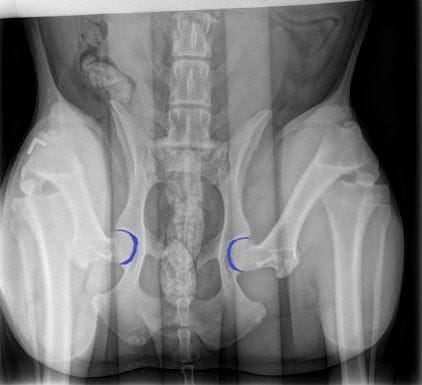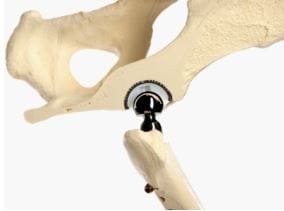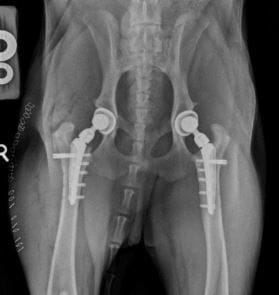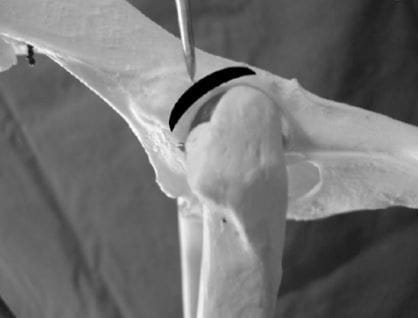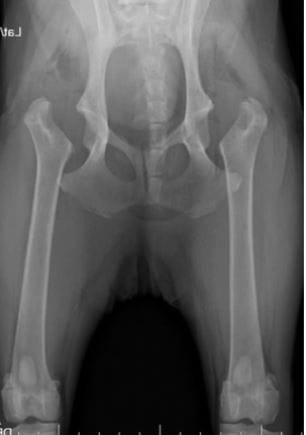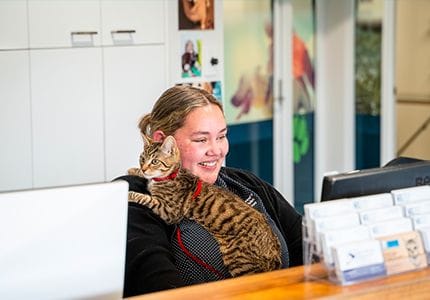What is hip dysplasia?
In dogs with hip dysplasia the hips are normal at birth, however the joint(s) develop abnormally. Hip dysplasia is a genetic disorder
where the developing joint becomes unstable resulting in laxity and changes in the weight bearing forces through the joint. This
results in changes to both the femoral head and acetabulum. The femoral head becomes flattened and misshapen and the
acetabulum poorly formed. The cartilage becomes damaged leading to the development of osteoarthritis and hip pain.
Clinical Signs can include:
- Hind limb lameness or stiffness which can be more pronounced after exercise or rest following exercise.
- Difficulty rising
- Reluctance to jump, ascend stairs or get onto the couch etc,
- Restlessness, moaning, licking at skin over hip are also less common but possible signs
- Neurological deficits are not part of hip dysplasia
There are generally two groups of patients that we see - young dogs with pain due to hip laxity, instability and synovitis, and older
dogs where there is progression of osteoarthritis.
Diagnosis
Physical examination: This may reveal muscle wastage around the hips or pain and/or instability with manipulation of the hips. Pain
is typically most pronounced during extension and abduction of the hips.
Radiographs - Radiographs (x-rays) are necessary to diagnose hip dysplasia. Both laxity and the presence of secondary osteoarthritic
change can often be seen on radiographs. Special techniques are sometimes required to diagnose laxity of the hips.


